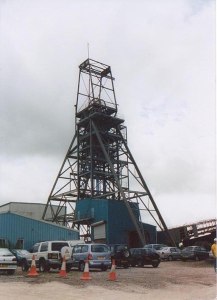Hilary Orange, ‘Cornish mining heritage and Cornish identity: Images, representations and narratives’ in Stefan Berger (ed.), Constructing Industrial Pasts: Heritage, Historical Culture and Identity in Regions Undergoing Structural Economic Transformation’, Berghahn Books, Oxford, 2020, pp. 107-127.
Hilary Orange, the leading expert on Cornwall’s mining heritage,1 in this contribution explores the connection between mining heritage and the Cornish identity. Most of the chapter is a fairly standard account of the emergence of a sense of Cornish identity based on industrial prowess and the diasporic influence of the Cornish who went to mining frontiers overseas, side by side with a brief narrative of the Cornish Revival.
In the late twentieth century these parallel strands – the Revival and Cornwall’s mining industry – began to cohere. Growing levels of in-migration from the 1960s induced a sense of anxiety and near panic among some and stimulated a consciousness of ethic difference. This consciousness was encouraged by similar movements in Wales and Scotland (and it might be added Brittany). Re-assertion of regional identity accompanied the increasing difficulties of the mining industry after the International Tin Council’s agreement to maintain high tin prices was abandoned in 1985.

As the price of tin plummeted Cornish mines went through a crisis in 1991/92, although the last mine at South Crofty staggered on until 1998. As mining ceased, policy-makers turned to its memory. Cultural entrepreneurs (and academics) embraced the hybrid image of the ‘Industrial Celt’, weaving together Cornwall’s Celtic roots and its industrial history. In 2006 parts of Cornwall (and west Devon) were designated a Mining World Heritage Site. The image of an engine house was already ubiquitous in local iconography but now public art joined it, such as statues of tin miners at Redruth (2008) and St Just (2015) and the Cornish Mining Man Engine phenomenon of 2016.

However, as Hilary Orange points out, the focus of mining heritage has remained firmly on the period of the eighteenth and nineteenth centuries when Cornwall led the way in British industrialisation (and de-industrialisation). Twentieth century mining has been less well represented in heritage images even though mining continued almost to the end of that century. In particular, Hilary Orange draws our attention to how the employment of Polish and Italian workers in the 1940s and in-migration from other places afterwards created a more international labour force which tends to undermine the image of the Cornish Industrial Celt.
In reality, as she points out, both the ‘traditional diasporic image and narrative’ and the wartime and post-war arrival of workers from elsewhere are part of a common thread – the global labour market and industrial mobility. A traditional focus on the diaspora and the outward flow of labour might be joined by some work on the character of the late labour force and inward flows. For example, she suggests questions around the way incoming miners saw ‘themselves and each other’ and how the stories of their relocations are ‘reflected within the heritage-making practices within the region’. We might also add issues of their acculturation. Within a generation or two most of those Polish and Italian families had become Cornish. What tensions were involved in this process and how did it compare with acculturation or the absence of it among the greater number of later migrants from parts of England?
- See her excellent and evocative account of the final days of the Dry at Geevor – Hilary Orange, ‘Humor in the Industrial Workplace: Laughter in the Dry, Geevor Mine, Cornwall’, Journal of the Society for Industrial Archeology, 43, 1/2 (2017), pp. 93-104. ↩︎